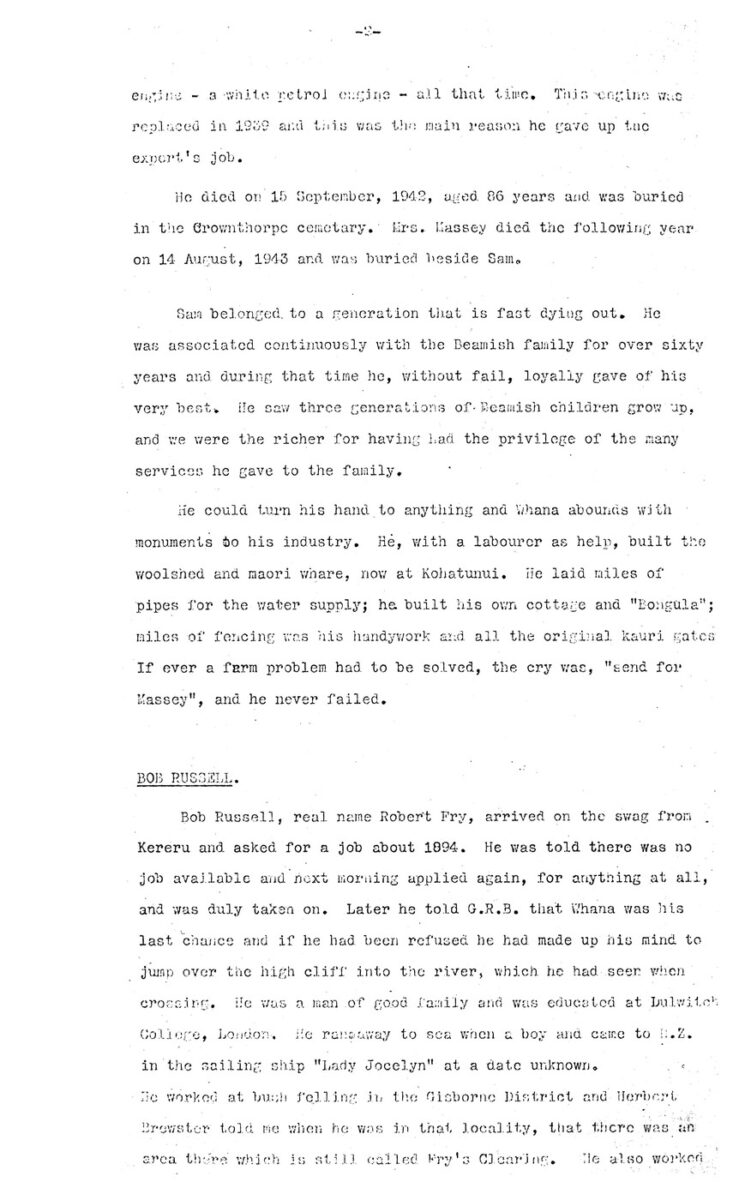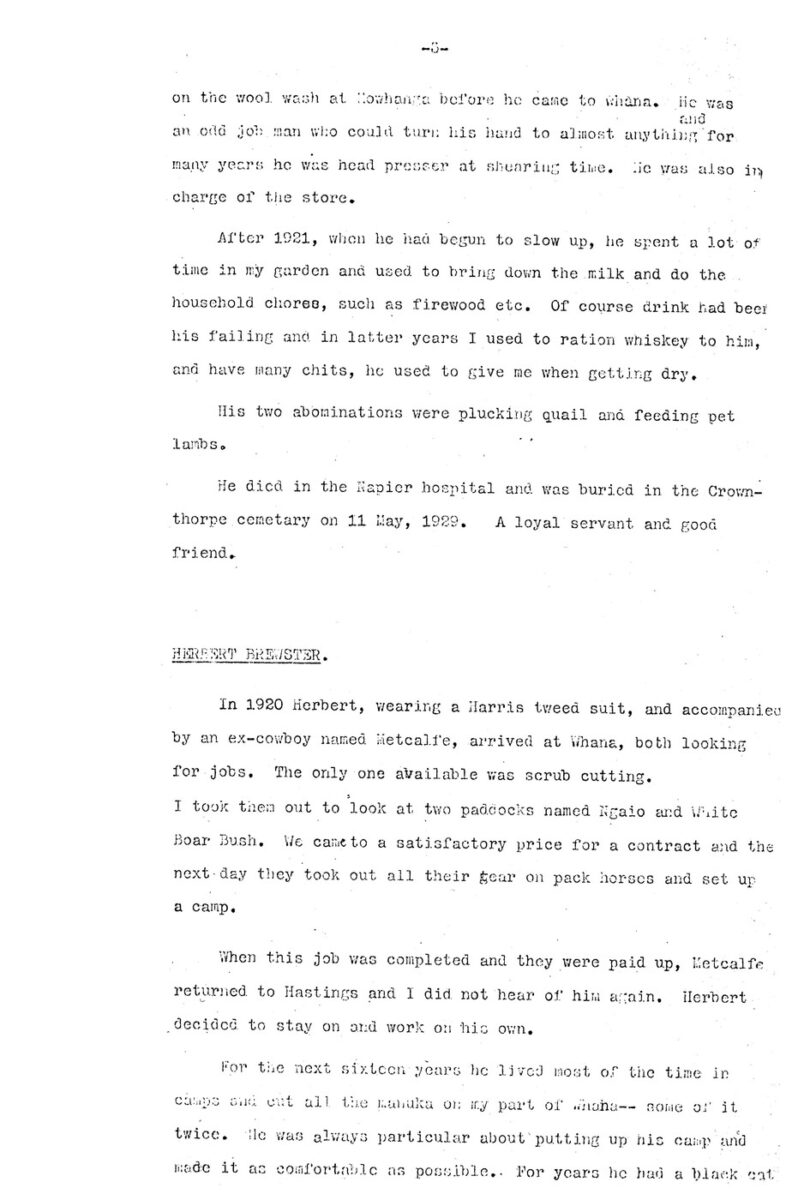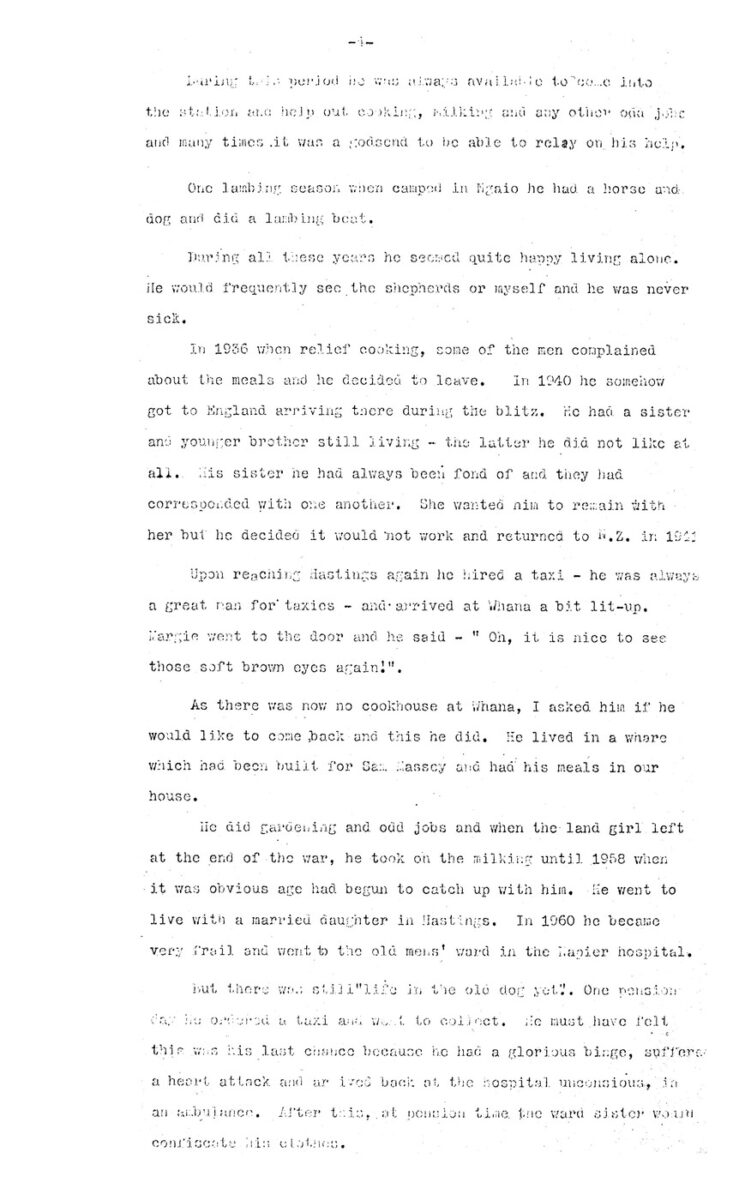– 5 –
After his death in 1960, aged 87 years, he was cremated and Richard Beamish and I buried his ashes on the highest point in “Brewster’s Camp” – a paddock named after him – just above one of his old camp sites.
The reason why he never did any good for himself was booze. His father was rector of a parish near Lincoln, England, and he was educated at Lincoln Grammar School and Russell, a school for sons of clergymen.
At the age of 19 he was sent to a man call [called] St. Leger, who afterwards came into a title, and was farming up the coast from Gisborne. In those days the people there were hard living lot and it must have been here he got into bad company.
He eventually married and was the father of two boys and four girls all of whom have done well for themselves. The eldest son was one of the engineers who designed the Mulberry Harbours for the Normandy landing.
In 1914 when farming at Bay View, he left for England, joined the Royal Horse Artillery and survived all the rest of the war in France with no hurt to himself.
In 1917 unknown to one another he was at a rest camp and I was on an aerodrome at Verte Galante near Amiens.
Herbert returned to N.Z. in 1919, and sometime later his domestic arrangements blew up and he came to Whana.
Whenever he returned from town I could always tell what state he was in from the snappiness of the salute I would receive; the higher the pressure the more like a guardsman’s it would be and then a beaming smile, and – “Remember Verte Galante.”
Herbert was a most likeable man, loved children and we were all very fond of him. Of course we being on the side line could always enjoy the funny side. Naturally his own family were not amused.
















Do you know something about this record?
Please note we cannot verify the accuracy of any information posted by the community.